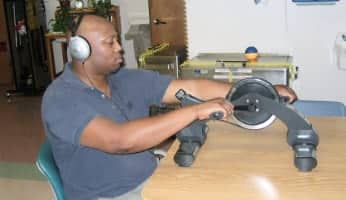Aiden’s Transformation: IM Training’s Impact on Focus, Impulsivity, and Self-Esteem

Home - Testimonials - Pediatric Testimonials - Aiden’s Transformation: IM Training’s Impact on Focus, Impulsivity, and Self-Esteem

Aiden’s Transformation: IM Training’s Impact on Focus, Impulsivity, and Self-Esteem
“Aiden” is an 11 year old boy diagnosed with Pervasive Developmental Disorder (PDD), high functioning. He is friendly, bright and talkative but has difficulty staying focused and following instructions.
While talking he will sometimes insert random comments irrelevant to the topic. Good behavior is often negotiated. Physical coordination is a challenge for him (his scores are in the 4th percentile). He is a 6th grader.
Pre Long Form Assessment (LFA)
Aiden scored between 83-402 milliseconds (ms), with eight of the thirteen scores over 250 ms (extreme deficits).
His hand and foot movements were choppy, not fluid and it was apparent that his timing was severely skewed.
His Attend Over Time score was very high (223 ms, severe deficit) but he was able to complete the test which was important in determining if he was ready for the demands of the Interactive Metronome (IM) program.
Because of such poor scores it was not clear if Aiden would be able to master all components of the program but the decision was made to take him as far as possible.
Exercises
Initially quite a bit of hand-over-hand guidance was given, light touch, and mirroring (tempo 40). Only hand exercises were attempted during session #1, toe exercises were introduced during session #2, but heels, bilateral, and balancing exercises were omitted initially.
Visual cueing was introduced with a difficulty setting of 130 so he would see fewer “reds” (indicating he was way off beat).
Breaks were needed and given often. During session #4 guide sounds were introduced, the session was overwhelming and ended with a meltdown.
Sessions #5 through #8 focused on learning proper foot placement for the heels, bilateral, and balance exercises.
These were done by face-to-face mirroring, holding his hands, and counting out loud. No visual cueing was used except for during the both hands exercise where progress was made on tempo and duration.
Initially the metronome itself was not turned on for the heels exercises as backward motion was so challenging that Aiden would lose his placement after 3-4 repetitions and his speed would vacillate so much that no tempo setting was appropriate.
Attitude
Although cooperative, he would often speak to himself or make comments that didn’t fit the topic.
He showed little muscle tolerance for the foot exercises, and had a great deal of nervous itching/twitching.
To create an environment of success, no emphasis was put on scores, bursts or beating previous scores. The ceiling fan was kept off and the blinds were closed to help him focus. Short form tests were not given.
His family understood that we were not yet fully utilizing IM but remained optimistic that this was a first step toward that goal.
On session #12 visual cueing was added to facilitate performance on the foot exercises, improvements were made, and by session #14 Aiden was comfortably cueing from the screen.
Interim Long Form Assessment (LFA) & Remaining Sessions
The LFA was completed during session #15, and improvement was made on all tasks.
Aiden was at his best during the first half hour, so during each session we followed with a warm-up then moved right into the most challenging exercises and saved the easiest task (Both Hands) for the end.
During this final task of the session, Aiden worked on sustained attention and he completed longer repetitions.
We now felt Aiden was competent in the mechanics (had improved in motor planning and sequencing) and was ready to take on the auditory challenges of IM. The guide sounds were reintroduced and set at the lowest volume. The volume was gradually increased over the next several sessions. He did resist the guide sounds at first. The tempo, which had been reduced to facilitate improvement in motor planning and sequencing, was increased back to 54 beats per minute by session #17 all exercises.
By session #22 all visual cues were removed. The remaining sessions focused on auditory processing (with guide sounds on at the same volume as the reference tone).
Post Long Form Assessment (LFA)
The Post LFA was given at session #25. Most of Aiden’s scores were in the average or above average range. Aiden did not plateau, so he could go further with IM.
However, after 25 sessions, over 45,000 repetitions, and significant changes above observed in Aiden’s level of function, it was decided that interventions should now focus on preparation for Standards of Learning (SOLs).
Conclusion
Aiden’s parents reported improvement in these areas:
- Focus/concentration
- multi-tasking
- coping skills
- rhythm/timing
He needs less supervision when doing homework.
His teacher commented that his ability to attend in class had improved.
As his therapist, I observed improvement in Aiden’s ability to understand directions.
He is less impulsive, more patient with himself, and shows more tolerance for the many challenges of the program.
He no longer tries to negotiate rewards for good behavior.
He has better focus, improved visual and auditory processing speed, much better rhythm, coordination, and motor skills, and there is less “random” talk.
As we neared the last 5-6 sessions he demonstrated more of selfawareness of his accomplishments and bolstered self-esteem.




